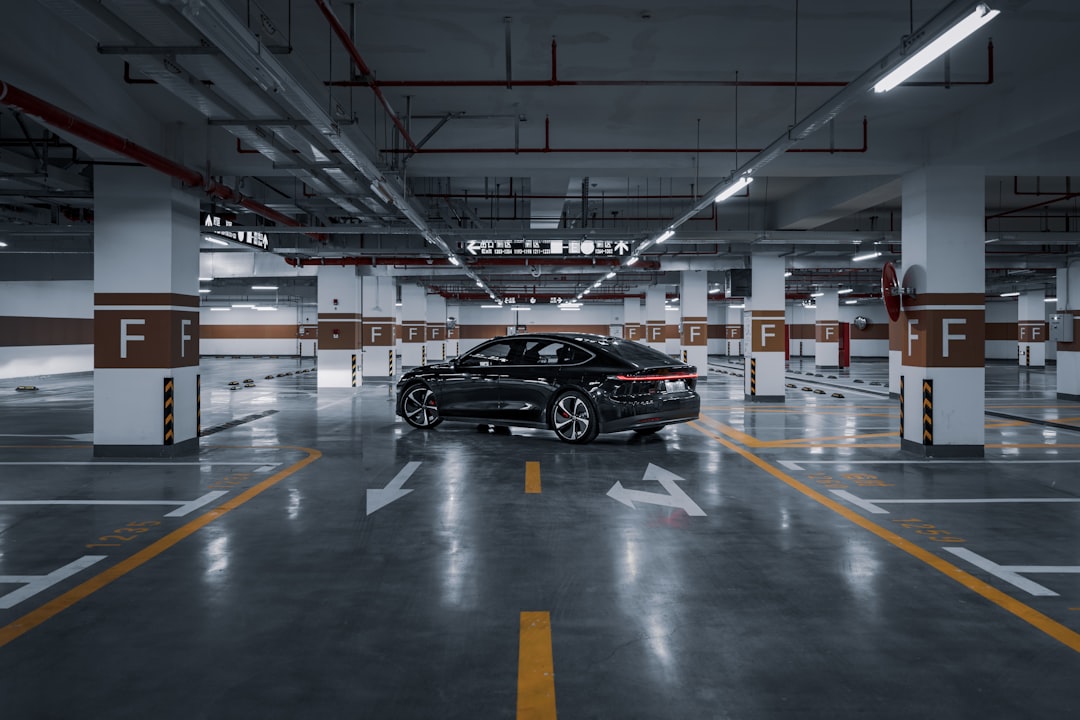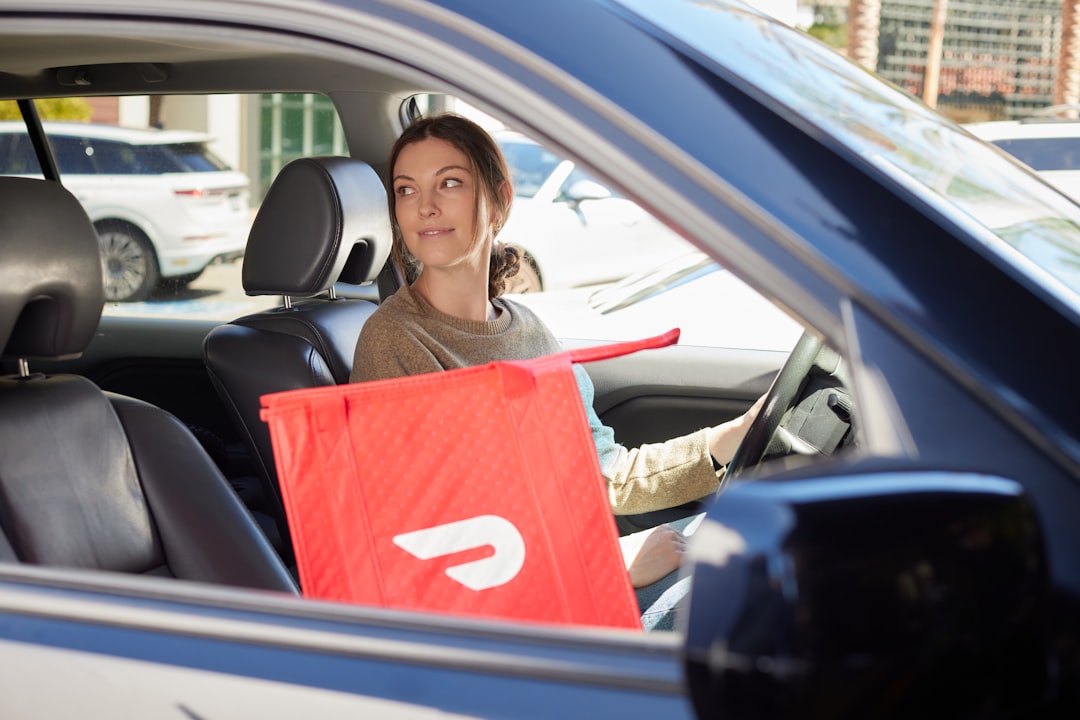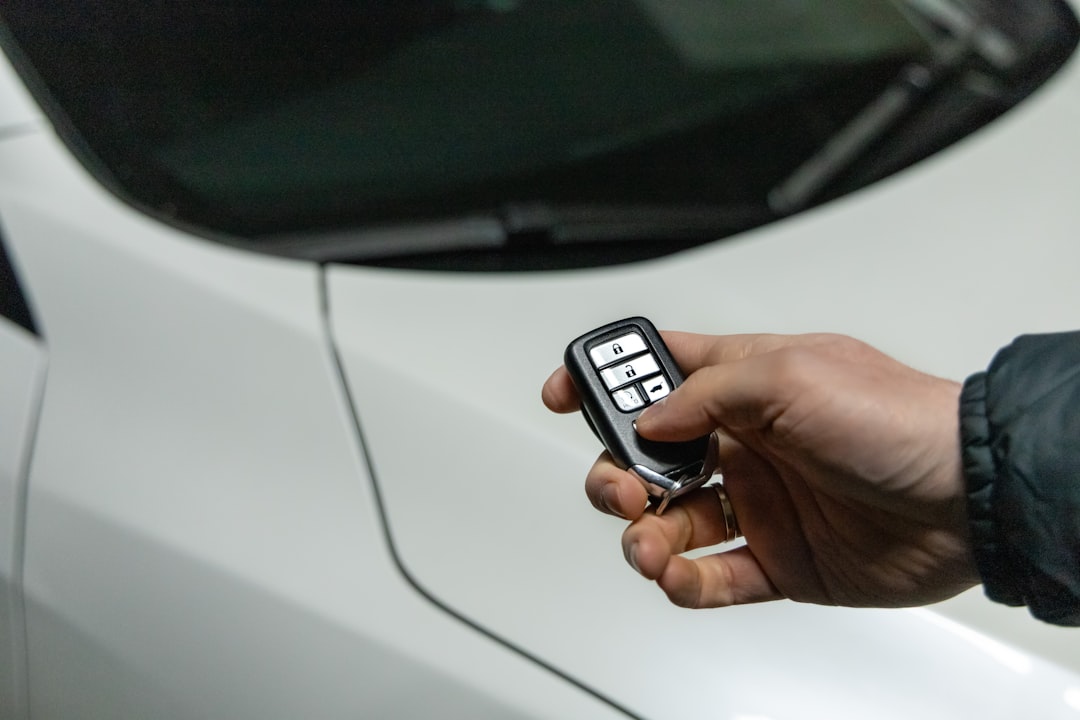

Engage prospects with a scan and streamline customer engagement with FREE QR code marketing tools by Sona – no strings attached!
Create a Free QR CodeFree consultation

No commitment

Engage prospects with a scan and streamline customer engagement with FREE QR code marketing tools by Sona – no strings attached!
Create a Free QR CodeFree consultation

No commitment
Today's car buying services face a pivotal challenge: bridging the gap between in-person showroom experiences and the convenience of digital engagement. In an age where buyers expect immediate, self-directed information about new car models, financing, and trade-ins, the lack of seamless, actionable digital touchpoints means that high-value prospects can slip through unnoticed. Missed opportunities often stem from relying on static materials such as printed brochures or forms that are not integrated with real-time data capture or retargeting capabilities.
QR codes in marketing have emerged as a practical, flexible strategy for converting every physical interaction, whether on dealer lots, window stickers, or printed ads, into a measurable digital touchpoint. Because these engagements require nothing more than a smartphone scan, buyers can instantly access detailed vehicle info, book test drives, or begin trade-in appraisals, without manual intervention from dealership staff. This not only improves buyer convenience but also dramatically increases the odds of capturing lead data before a competitor does.
Strategically implemented, QR codes deliver more than immediate lead capture; they open avenues for actionable insights, ongoing retargeting, and better segmentation based on real-world buyer behavior. This guide explores how car buying services can tackle long-standing pain points such as poor visibility into anonymous prospects or untimely follow-ups by weaving QR code solutions into every step of the journey.

Many car buying services struggle with missed high-value prospects simply because those buyers never formally introduce themselves, leaving valuable opportunities untracked in CRMs. Static, paper-based test drive registration and traditional sign-ups can mean that even engaged, in-market shoppers walk away anonymously. By embedding QR codes at critical offline touchpoints, car buying services can ensure that prospects with genuine interest are tracked from first contact.
Replacing analog processes with QR-driven flows improves both customer experience and operational accuracy. Paper forms lead to slow intake, illegible handwriting, and delayed follow-up. QR codes take that friction away by routing shoppers directly to mobile-friendly experiences that authenticate identity, capture accurate details, and sync instantly to CRM and marketing automation tools like Sona QR and Sona.com. The result is faster speed to lead, higher data quality, and more opportunities to segment and convert.
By layering these techniques with modern identity resolution and CRM enrichment, car buying services convert fleeting offline curiosity into attributable pipeline. Sales teams get alerts while intent is still high, and marketing teams gain visibility into what buyers want, at the moment they want it.

Often, the real cost of offline-to-online disconnect is not just in lost leads, but in delays that let more agile competitors reach buyers first. When vehicle shoppers browse dealer lots, attend events, or notice a campaign in the wild, anonymity makes it hard to identify real intent. Without clear attribution, sales teams struggle to prioritize timely follow-up, and marketing teams miss opportunities to personalize outreach. QR codes give car buying services the power to bring physical interest into digital focus and turn scans into next steps.
For dealerships and buying services, QR codes meet consumer expectations for speed and simplicity. Prospects can move from a windshield sticker to a trade-in appraisal or a financing pre-qualification in seconds. Teams gain the ability to test messaging, measure scan-to-lead conversions, and shift budgets toward what works. When combined with a platform like Sona QR, dynamic codes, scan analytics, and identity resolution turn a simple sticker into a performance channel.
This approach not only increases lead capture rates, it also helps prioritize outreach. Buyers who scan trade-in or financing codes can be routed to agents for quick follow-up, while casual model browsers can receive lighter-touch nurtures until their intent strengthens.
Car buying services juggle everything from vehicle discovery to finance applications, and that means flexibility is essential. Different QR formats support different outcomes, from instant browsing to contact save to pre-filled inquiries. Using the right format for the right moment reduces friction and improves data quality.
Dynamic QR codes are often the best fit for automotive because inventory, pricing, and incentives shift frequently. With a dynamic code, you can change the destination, run A/B tests on landing pages, and see engagement analytics without reprinting materials. Static codes have a place for evergreen assets like a dealership map or a generic contact card, but they are less practical for campaigns that need ongoing optimization.
With Sona QR, you can generate and manage all of these formats in one place, run experiments by placement or creative, and route scans by context to deliver the next best action.

Growth often hides in overlooked offline touchpoints where interest sparks but goes untracked. Every lot visit, brochure pickup, or event interaction is a chance to capture intent and guide buyers forward. When these moments are instrumented with QR codes and connected to CRM, dealerships stop guessing and start orchestrating.
Start by auditing your existing physical assets and buyer journey pauses. Look for places where people linger or need more information. Then pair each moment with an action that both helps the buyer and captures a useful signal for your team. Use unique QR codes per asset so you can measure what performs and refine accordingly.
These placements not only salvage otherwise anonymous engagement, they also establish a feedback loop for continual improvement. By testing different CTAs and offers across these surfaces, you learn quickly what content drives scans, inquiries, and conversions.

A recurring pain point is the lag between customer interest and dealership response. When contact data is captured late or not at all, competitors can move in. QR-driven use cases close this timing gap by moving buyers into digital flows the instant curiosity appears, while creating clean data for segmentation and tracking.
Prioritize a small set of high-impact use cases first, then expand as teams build confidence. Each use case should map to a clear business outcome, whether that is more test drives, more valuations, or more finance applications. Keep design consistent, use short benefit-led CTAs, and route to mobile-first pages optimized for quick completion.
Such deployments do more than collect names. They flag buying stage and interest category automatically, allowing marketing to tailor nurture content, and enabling sales to focus on prospects most likely to convert in the near term.
Each QR scan generates a rich context signal. You know where it happened, which creative it came from, and what content it triggered. When you attach these signals to prospects in your CRM, you gain the ability to build audience segments that reflect real-world behavior rather than generic site browsing. These segments power more relevant email, SMS, and paid retargeting.
For car buying services, audience distinctions often map to model interest, ownership status, and financing readiness. A lot scan on an SUV spec sheet tells a different story than a scan on a 0 percent APR flyer at a community fair. Use Sona QR to tag each scan by use case, location, and time, then sync to your CRM and ad platforms for automated follow-up sequences. For paid retargeting tactics, see Sona’s playbook intent-driven retargeting.
Automating these segments solves a common problem in automotive marketing: cold or irrelevant retargeting. Instead, you serve content that aligns with exactly what the buyer just did, improving click-through rates, appointment show rates, and overall conversion velocity.
Car buying is a multichannel journey that blends in-person browsing with digital research and decision-making. The challenge is not generating interactions, but connecting them so you can respond with clarity and speed. QR codes unify your offline materials with your digital engine, creating an always-on bridge from physical to measurable action.
Treat each print asset and in-store surface as an onramp to a tailored digital path. Use unique codes by channel and creative so you can attribute performance back to specific placements. With Sona QR, you can centralize code creation, routing, and reporting, then pass engagement data to your CRM and ad platforms for complete funnel visibility.
By treating QR codes as connectors rather than one-off utilities, you build a cohesive data layer across media, making every scan a step forward in a managed, measurable buyer journey.
A strong QR strategy in automotive begins with focus. Start by choosing one or two business outcomes that matter most, such as increasing test drive bookings or accelerating trade-in appraisals. Then design your codes, creative, and destinations around unmistakably clear actions that help prospects move forward and help your team measure progress.
This checklist turns strategy into repeatable execution. Each step is pragmatic and scalable, from small pilots to multi-dealership rollouts. Use Sona QR to centralize code creation, dynamic routing, and analytics, and to sync all scan activity with your CRM for fast, informed follow-up. Start creating QR codes for free.
Pick a goal you can measure in weeks, not months. For example, drive 30 percent more test drive bookings from on-lot browsers, or increase completed trade-in valuations from event attendees by 20 percent. Align the use case with a clear next step and a conversion event you can attribute.
Avoid trying to solve everything at once. If your biggest leak is anonymous lot traffic, focus on window-sticker CTAs. If you already get foot traffic but slow follow-up, begin with scan-to-book test drives and automated confirmations. Document the success metric and timeline before you design.
Choose dynamic QR codes for most campaigns. They allow you to edit destinations after printing, add UTM parameters, run experiments, and see scan analytics by placement, device, and time. Static codes work for evergreen assets like a general contact page or dealership map, but they limit optimization.
Consider the lifespan of each asset. For model-year promotions that will evolve, dynamic is essential. For a permanent showroom panel that links to a general concierge page, static may suffice if you do not need analytics.
Design for scannability first. Choose high-contrast colors, leave quiet space around the code, and size appropriately by viewing distance. Pair each code with a benefit-led CTA that explains the value of scanning. For example, Scan to see your monthly payment or Scan to reserve this vehicle.
Test in real conditions before producing at scale. Check scan performance on multiple devices, under showroom lighting, on reflective glass, and from the expected viewing distance. Verify that the destination loads quickly on mobile and that the form fields are minimal.
Place codes at natural pause points along the buyer journey. On the lot, that means window stickers, pole signs, and door clings. In the showroom, focus on sales desks, finance offices, and waiting areas. Outside the dealership, leverage direct mail, community events, and local sponsorships to drive scans that start digital journeys.
Stagger your rollout so you can measure impact and adjust. Begin with two or three placements, track scan-to-conversion performance, then expand to more surfaces and channels. Keep each placement’s CTA tightly matched to context and intent.
Monitoring and iteration separate average QR efforts from high performers. Use Sona QR dashboards to track scans by time, location, device, and campaign. Watch downstream metrics like form completion, test drive show rates, and sale conversions to understand true impact.
Optimize landing pages, CTAs, and placements based on data. If a code gets lots of scans but few form fills, simplify the form or switch to a one-tap callback request. If a placement underperforms, test a stronger value proposition or move it to a higher dwell area.
One critical pain point for car buying services is the inability to connect offline engagement back to concrete revenue or customer journeys, leaving teams to guess which efforts matter most. Effective QR code deployments close this loop by tying scans to actions such as bookings, valuations, and applications. The key is to push scan data into your systems in real time, then trace each contact through to test drives, proposals, and sales.
Traditional tools often stop at top-line scan counts, which is not enough for performance decision-making. With Sona QR and Sona.com, you can enrich scan events with campaign metadata, link anonymous scans to known identities when they convert, and attribute revenue across multiple touches. This eliminates blind spots and supports fast optimization while campaigns are live. For deeper analysis, see Sona’s blog post measuring marketing’s influence on the sales pipeline.
When analytics illuminate the entire path, your team can double down on what works and sunset what does not, improving efficiency and growth.
As your program matures, expand thoughtfully. Add codes to new surfaces, deepen automation, and refine follow-up content to match the buyer’s stage. Keep measuring performance and run regular experiments to uncover incremental gains in scan rates and conversion.
Success depends on both technology and people. Train staff to point out QR-enabled experiences and to explain the benefit of scanning. Use consistent creative standards so buyers instantly recognize your codes and understand what they will get from the action.
These practices compound over time. The more your operation treats scans as the start of a managed journey, the more predictable your pipeline becomes.

It is common for dealerships to underestimate the impact of offline-to-online attribution gaps or the risk of missing engaged prospects. Yet QR enablement routinely delivers measurable improvements when used as part of a cohesive marketing and sales system. The most successful teams build standard playbooks for code placement, CTAs, and follow-up. See dealership QR tactics.
Below are examples that demonstrate how QR codes can turn anonymous interest into attribution-rich leads and revenue. The tactics are simple but powerful: meet buyers where they are, give them immediate value, and capture signals that help you respond in minutes, not days.
Expert insight: QR codes are dissolving the dividing line between physical and digital retail, making every buyer interaction a source of actionable data.
ROI benchmark: Industry data shows that well-executed QR campaigns in automotive yield up to 2.4 times more engagement than static print assets, with scan-to-lead conversion rates ranging from 18 to 32 percent depending on placement and offer strength.
Industry experience makes clear that QR success depends as much on operational detail as on technology. Strong creative, thoughtful placement, and fast follow-up are the ingredients that turn scans into results. Equally important is avoiding small mistakes that can undermine adoption or data quality.
Treat your QR program like any performance channel. Audit placements regularly, rotate creative, and maintain a single source of truth for code ownership. Above all, ensure that the scan experience loads fast, matches the promised CTA, and routes to a mobile-first page that can be completed in under one minute.
The modern car buying journey is increasingly omnichannel, and dealership leaders know that every offline engagement presents a risk of missed opportunity if left untracked or unmeasured. QR codes, supported by platforms like Sona QR and Sona.com, provide a practical answer to lost prospects, segmentation gaps, and unmeasured marketing spend by turning physical curiosity into digital action with full attribution.
By embedding best practices such as dynamic campaign targeting, unified analytics, and seamless CRM integration, dealerships can transform the often chaotic transition from physical to digital into a streamlined, data-driven process. This enables more personalized buyer journeys and timely follow-up while empowering sales and marketing teams to react before competitors close the loop. As the sector evolves, success will belong to those who see every interaction on the lot, at an event, or through the mail as a potential conversion moment. QR codes make it possible to meet buyers where they are, track engagement in real time, and capitalize on signals that previously went unnoticed.
QR codes have revolutionized car buying services by transforming traditional lead capture into a seamless, data-driven process. Whether it’s acquiring new customers, enhancing the showroom experience, or streamlining follow-ups, QR codes enable instant, mobile-friendly interactions that convert interest into qualified leads effortlessly. Imagine knowing exactly which brochures, test drive offers, or promotional materials generate the most inquiries—and being able to optimize your strategy in real time.
With Sona QR, you get dynamic, trackable QR codes that update instantly without the need to reprint, allowing you to adapt campaigns on the fly and link every scan directly to revenue opportunities. No more missed leads or guesswork—just smarter, measurable growth for your car buying service. Start for free with Sona QR today and turn every scan into a confident step toward closing your next deal.
Identify your key goals such as increasing test drive bookings or trade-in valuations, then compare services that offer seamless digital engagement, real-time lead capture, and CRM integration tailored to your objectives.
The process typically includes browsing vehicles in person or online, using QR codes to access detailed information or book test drives, completing trade-in appraisals or financing pre-qualifications digitally, and then finalizing the purchase with timely dealership follow-up.
Use QR codes provided by the dealership to instantly access financing calculators, special offer claims, and pre-qualification forms, enabling quick, accurate comparisons and timely interactions with finance agents.
QR codes bridge offline and online experiences by providing instant access to vehicle details, test drive bookings, trade-in appraisals, and financing options while capturing lead data, improving follow-up speed, and enabling better marketing segmentation.
Evaluate services based on their use of dynamic digital tools like QR codes for lead capture, CRM integration capabilities, real-time analytics, personalized buyer journeys, and ability to deliver measurable outcomes such as increased test drives or trade-in valuations.
Use Sona QR's trackable codes to improve customer acquisition and engagement today.
Create Your FREE Trackable QR Code in SecondsJoin results-focused teams combining Sona Platform automation with advanced Google Ads strategies to scale lead generation

Connect your existing CRM

Free Account Enrichment

No setup fees
No commitment required

Free consultation

Get a custom Google Ads roadmap for your business






Launch campaigns that generate qualified leads in 30 days or less.
